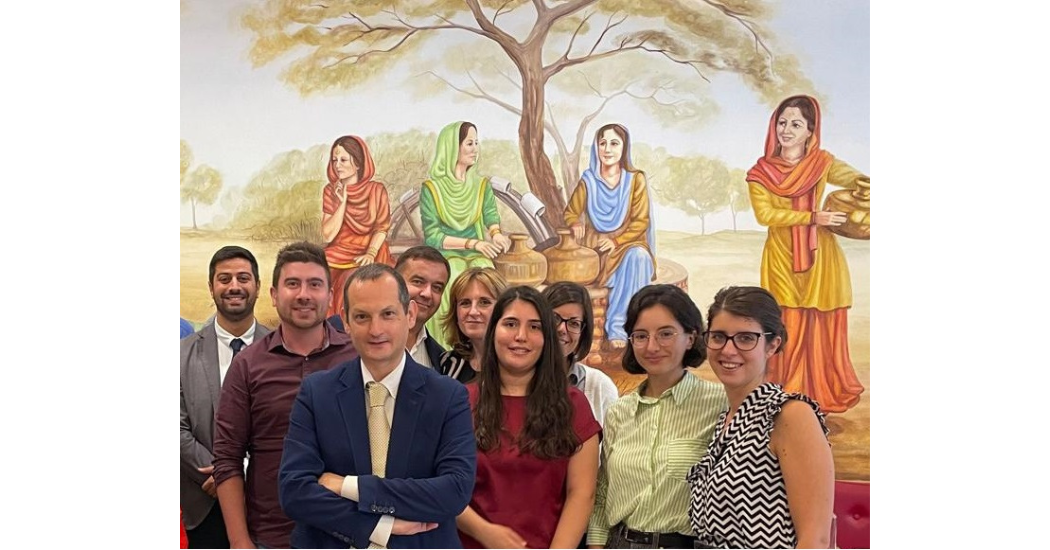Today, September 13th, the MAGI Biomedical Research Center in Rovereto concluded an event of significant scientific and cultural value, featuring distinguished guests from Slovakia: Professor Jan Miertus and Professor Miroslava Vráblová. Professor Jan Miertus, a medical graduate specializing in medical genetics, plays a key role in the genetic diagnostics activities at MAGI. Dividing his time between Italy and Slovakia, Jan Miertus is a central figure in fostering scientific collaboration between the two countries. His wife, Professor Miroslava Vráblová, holds a law degree and specializes in criminology. After a period of university teaching, she now lectures in criminology at the Slovak Academy.
The primary purpose of the meeting was to conduct a quality system review of the MAGI laboratory. The event provided not only a professional evaluation but also an opportunity for convivial exchanges. A lunch at an Indian restaurant in Rovereto, attended by MAGI researchers, Professor Jan Miertus, and Professor Miroslava Vráblová, offered a pleasant moment for dialogue between science and culture, enhanced by traditional Indian cuisine.
Afterward, the discussions resumed, focusing on the scientific collaboration between MAGI and Trnava University.
Trnava, one of Slovakia’s oldest cities, is known as the “Slovak Rome” due to its rich religious and cultural heritage. The historic center, enclosed by ancient medieval walls, is an architectural gem, captivating visitors with its timeless charm. The Town Square (Trojičné námestie) is the vibrant heart of the city, surrounded by elegant Baroque and Renaissance buildings, including the Town Hall, one of Slovakia’s most iconic examples of civic architecture.
The Cathedral of St. John the Baptist, with its towering twin spires, is a Baroque masterpiece, while the Gothic Church of St. Nicholas stands as another symbol of Trnava. Walking through the historic center is an immersive experience in centuries of history, showcasing noble palaces, ancient towers, and decorative details that highlight the artistic and cultural significance of this fascinating city.
Trnava’s University of St. Cyril and Methodius (Univerzita sv. Cyrila a Metoda v Trnave) has recently initiated a major scientific collaboration through its newly established Faculty of Natural Sciences (Fakulta prírodných vied). Despite being an emerging faculty, it is rapidly gaining prominence through innovative research initiatives such as the DanubeMathOmics Project – “Navigating the Omics Data River Together.” This project is a model of international cooperation, born from the collaboration between the Italian MAGI group, led by Dr. Matteo Bertelli, and Trnava University.

The collaboration was launched thanks to the efforts of Professor Stanislav Miertus, Dr. Dominika Vešelényiová, PhD, as well as Professor Jiří Pospíchal and Professor Iveta Dirgová Luptáková, both of whom have played a crucial role in advancing the cooperation between MAGI and Trnava University. Their contributions have been instrumental in facilitating the exchange of expertise and the integration of innovative research practices in the fields of biology and biotechnology.
The project focuses on the sharing and integration of omics data, a cutting-edge topic in these scientific disciplines, and demonstrates how a young faculty can develop collaborations that contribute to scientific and technological research in innovative and inclusive ways.
DanubeMathOmics demonstrates how a young faculty can develop collaborations that contribute to scientific and technological research in innovative and inclusive ways.
The discussion highlighted significant accomplishments, though there were some delays, leading to the decision to postpone the group’s meeting in Trnava to late November 2024. This event will serve as an important opportunity to discuss the scientific work conducted by doctoral researchers from Trnava University, who completed part of their training at the MAGI laboratory.
Beyond scientific matters, the meeting also touched on cultural themes. Professor Jan Miertus and Professor Miroslava Vráblová presented Dr. Matteo Bertelli with a painting depicting the main square of Trnava, symbolizing the appreciation and friendship between the two centers. Discussions emphasized the importance of continuing collaboration, not only in the scientific realm but also culturally, strengthening ties between the two institutions.
A final and significant moment of the meeting was dedicated to a shared passion for the “Social Doctrine of the Church,” which unites Professor Jan Miertus, Professor Miroslava Vráblová, and Dr. Matteo Bertelli. The MAGI laboratory in Rovereto is deeply rooted in Catholic culture. The Social Doctrine of the Church seeks to harmonize human and economic values for the holistic growth of both individuals and society, a topic that will be a focus of future discussions, particularly concerning the education of young people—an essential pathway to building a peaceful and inclusive society.
One key moment in the development of the Church’s Social Doctrine was the intervention of Pope Leo XIII, to whom Dr. Matteo Bertelli is particularly devoted. With the encyclical Rerum Novarum of 1891, Leo XIII laid the foundations for reflection on social justice, positioning the Church as a key voice in social and political matters. The encyclical proposed a model of development that respects the dignity of labor and promotes an economy in service of humanity, based on justice and solidarity.
Today, the Church’s Social Doctrine represents an important rediscovery, especially in the education of young people. In a world increasingly focused on economic and technological growth, it is essential that younger generations not lose sight of values such as respect, fraternity, honesty, and collaboration. These principles, which seem to have partially eroded in today’s society, are crucial for building strong human relationships and addressing the social and international conflicts we see emerging.
According to the Church’s Social Doctrine, educating young people must go beyond simple economic and professional preparation. It must promote holistic development, cultivating their abilities not only for material success but for the common good, with a deep awareness of their duties toward others and society. Young people should be taught mutual respect, moral integrity, and solidarity—values that, when properly integrated into their education, could be key to a more just and peaceful future.
This meeting demonstrated how science, art, and culture can coexist and strengthen one another, laying a solid foundation for future ambitious scientific and humanitarian projects.























